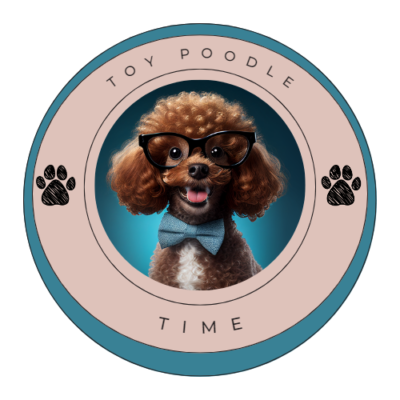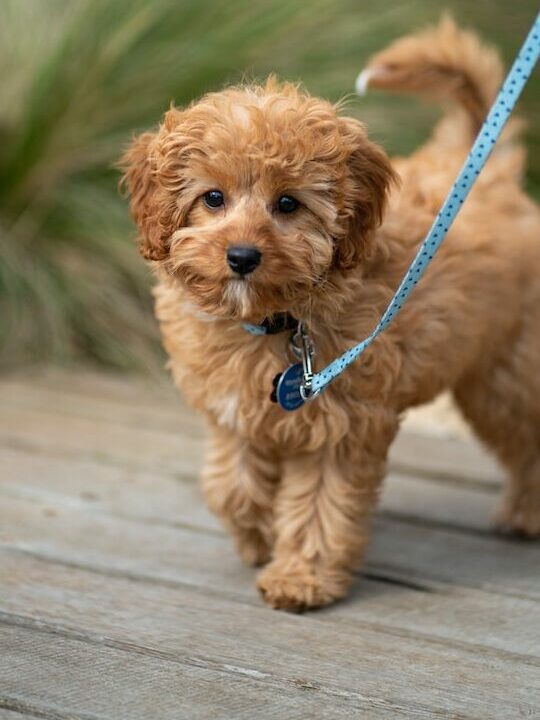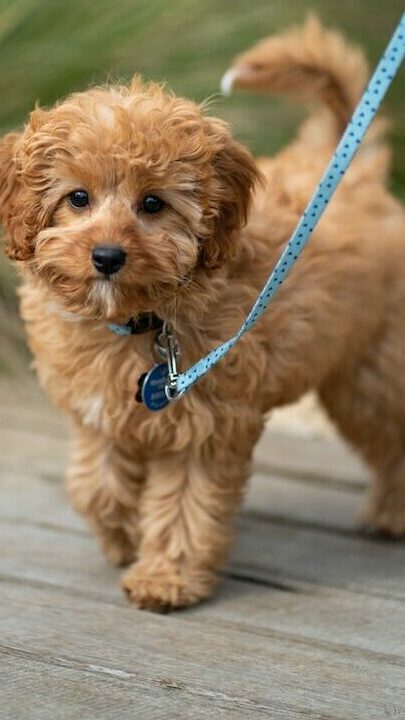
Walking your dog is one of the best ways to bond with your furry friend. Your dog gets to explore, stretch her legs, sniff new sniffs, pee on new things, and socialize. All of this helps to keep your companion mentally and physically healthy and happy. There are SO many benefits to walking your dog but to fully enjoy your walks, you’re going to need the right equipment. Let’s face it, an ill-fitting collar or harness and a crummy leash can take your fun experience to a dreaded chore, or worse, quickly. A collar or harness, paired with the proper leash helps to keep your dog safe, secure, and comfortable. But all dog leashes for small dogs are basically the same, right? Absolutely not!
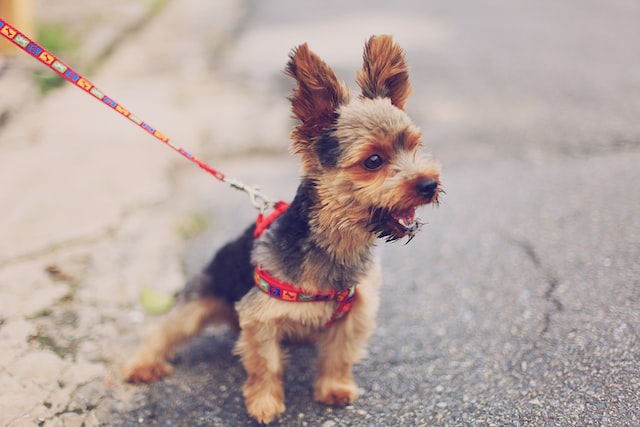
Types of Dog Leashes for Small Dogs
It’s easy to get a little overwhelmed with all the choices of dog leashes for small dogs. Which type should you choose? What material should you choose? Do you live in the city? The country? Does your dog have good walking manners? Or do you brave the outdoors with a tiny Cujo in tow? Ultimately, what type of leash you choose really depends on your activity level and what works best for you and your pup. What works for one person may not work for another. Knowing what’s available helps make your decision a whole lot easier, so let’s take a look at some of the types of dog leashes for small dogs. If you still have questions about which leash you need, please consult your vet about the specific needs of your dog.
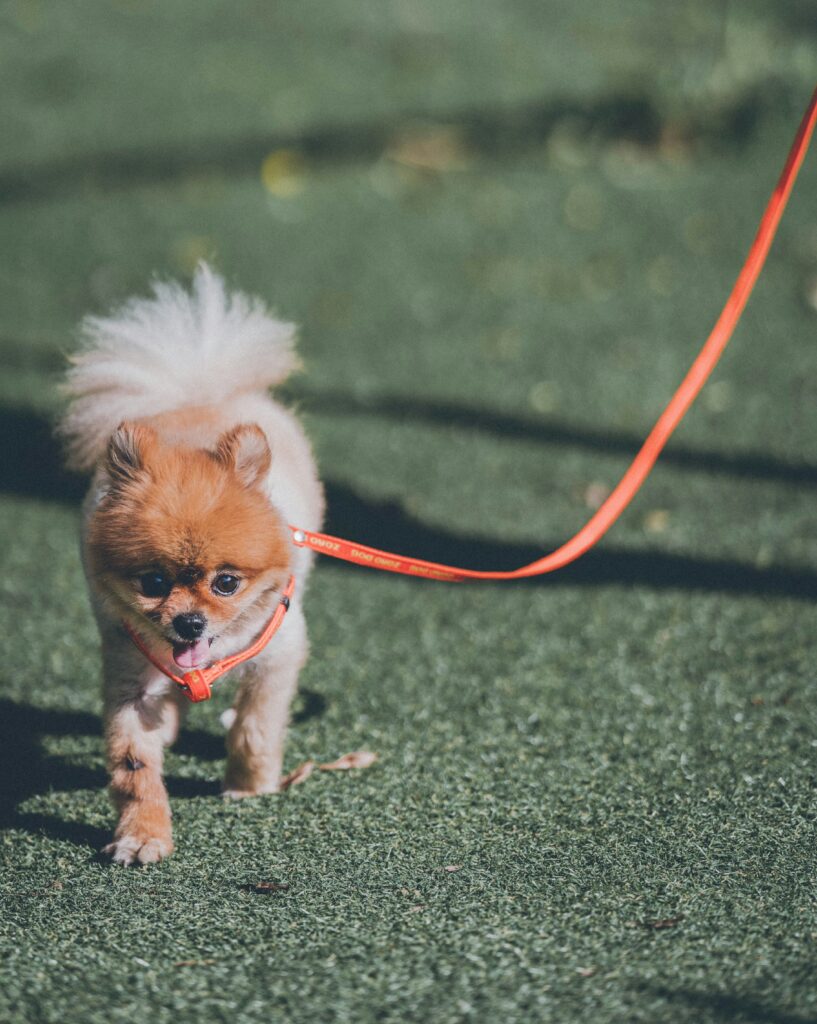
Basic Leash – Probably what first comes to mind when thinking about a leash. This easy-to-use leash is a solid piece of material with a handle at one end and clip at the other. This design works well for almost any kind of dog.
Double-Ended or Dual Leash – A versatile leash with two clips, one for attaching to your dog’s front clip, and the other for the back clip. These leashes give you more control than the basic type and helps curb leash pulling. The dual leash can also be converted several ways depending on what type of activity you and your dog are doing.
Retractable Leash – People either love them because they are easy, or they hate them because an improperly used retractable leash can cause some serious injury. The leash is a thin cord or ribbon wrapped around a spring-loaded mechanism and housed in a plastic handle. It has a brake and release button that allows you to retract or feed out the leash. These leashes are never designed to use with a collar, or with leash pullers.
Hands-Free Leash – Just as the name implies, this leash can be secured around your waist or over your shoulder for a hands-free stroll. The hands-free design offers you the least control over your pup, there are better options for unholy terrors. This type of leash is popular with joggers, just make sure you keep your eyes on your tiny friend at all times.
Harness/Leash Combo – Applies a gentle pressure to your dog’s belly when they begin to pull to discourage this behavior. The design has one strap goes around your dog’s belly and the other rests on your dog’s chest, just like a harness but with the leash already attached. As your dog pulls, only the belly strap tightens, not the neck strap, so there is no pressure being put on the neck area at all.
Bungee-style Leash – A portion of this leash has a built-in bungee that absorbs shock when a dog suddenly has a squirrel moment. This extra stretch softens the jerking motion felt when your dog reaches the end of his leash. This leash works well with pullers and some brands convert to a hands-free option.
Dog Leash Materials
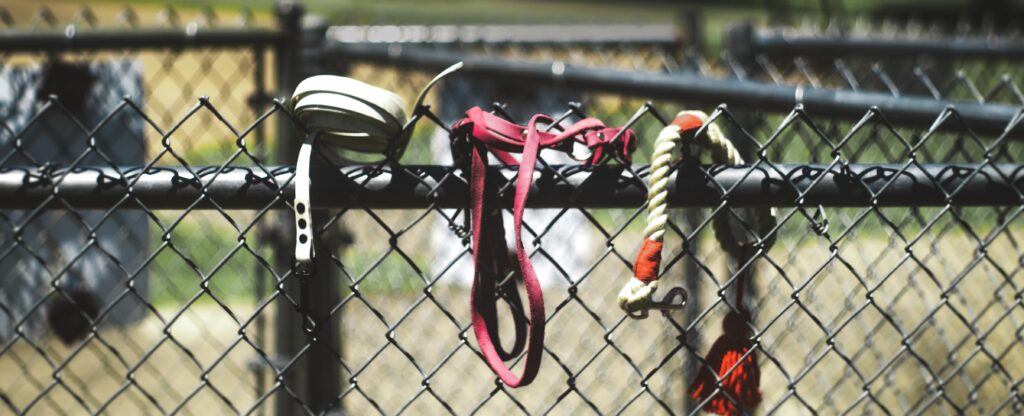
Dog leashes are made from several different materials. Whatever leash you choose, you’ll want it to be durable enough to withstand frequent outdoor usage. Your leash should also be tough enough to resist frays or tears that could compromise your dog’s safety. You might pay a little more, but a well-made leash will last for years. Let’s look at some common materials used to make dog leashes.
Nylon – Nylon is the most common leash material so there are tons of styles and colors to choose from. It is a sturdy, affordable, popular choice among pet owners. If your dog is a leash chewer, there are better options as nylon will fray. Also, nylon absorbs moisture when wet, becoming heavy.
Synthetic Rope – Synthetic rope leashes are made from either rock climbing or marine-grade rope. Leashes made with this material are built tough, chew resistant, and come in light-weight versions made specifically for small dogs.
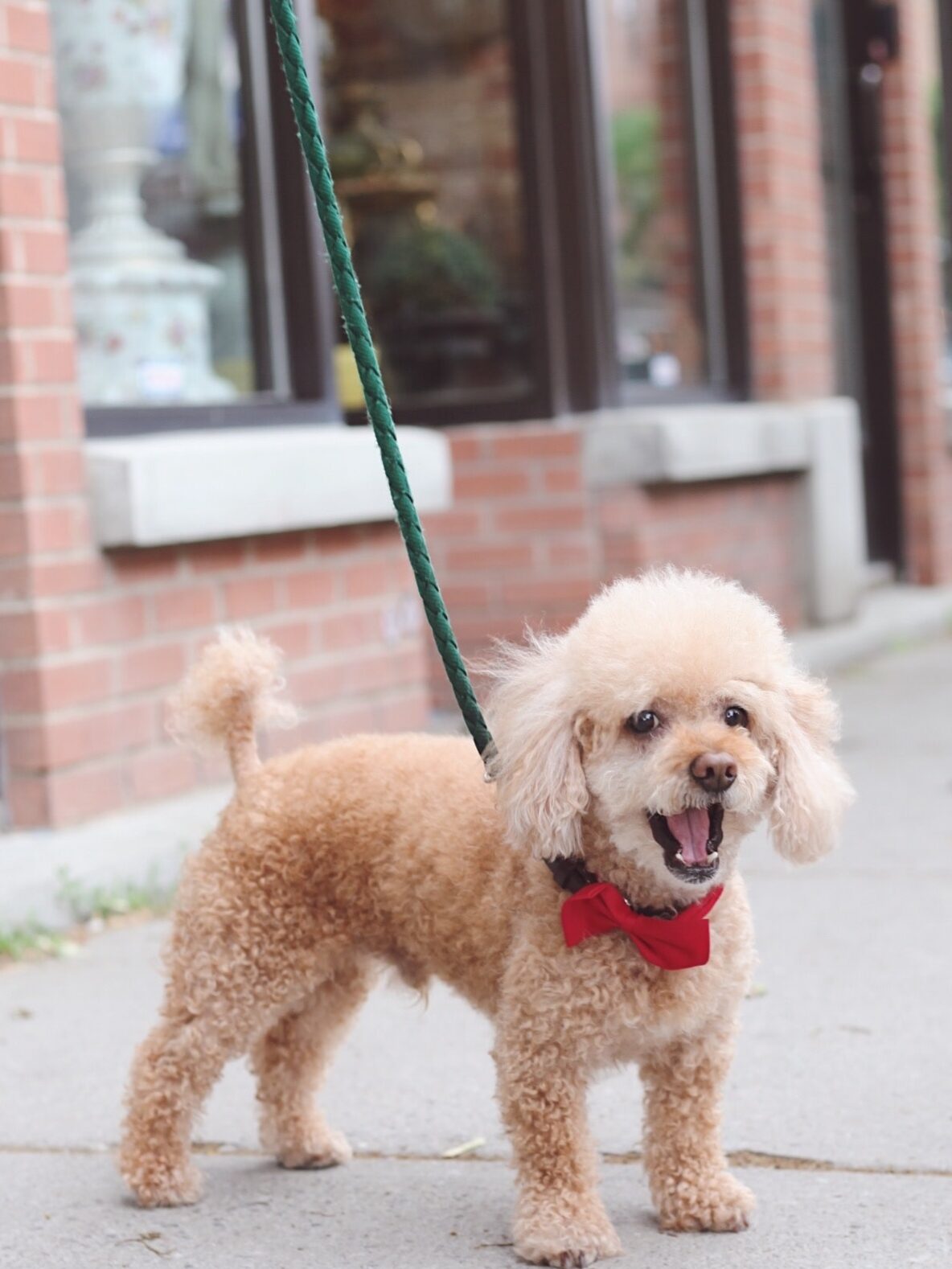
Leather – Always stylish. High quality leather leashes can be expensive, but they last for years with regular cleaning and conditioning. They will soften over time, providing a comfortable grip while maintaining durability. Leather is chew resistant, not chew proof.
Vinyl Coated Steel Cable – If your dog chews so much you’d swear he’s part beaver, this is the leash material you need. Light-weight, highly durable, and affordable.
Biothane – Biothane is a coated nylon webbing material. It is lightweight and flexible, very durable, and easy to clean. Biothane is waterproof, so it won’t soak up moisture adding weight, but some brands can be slippery when wet.
Clip Styles
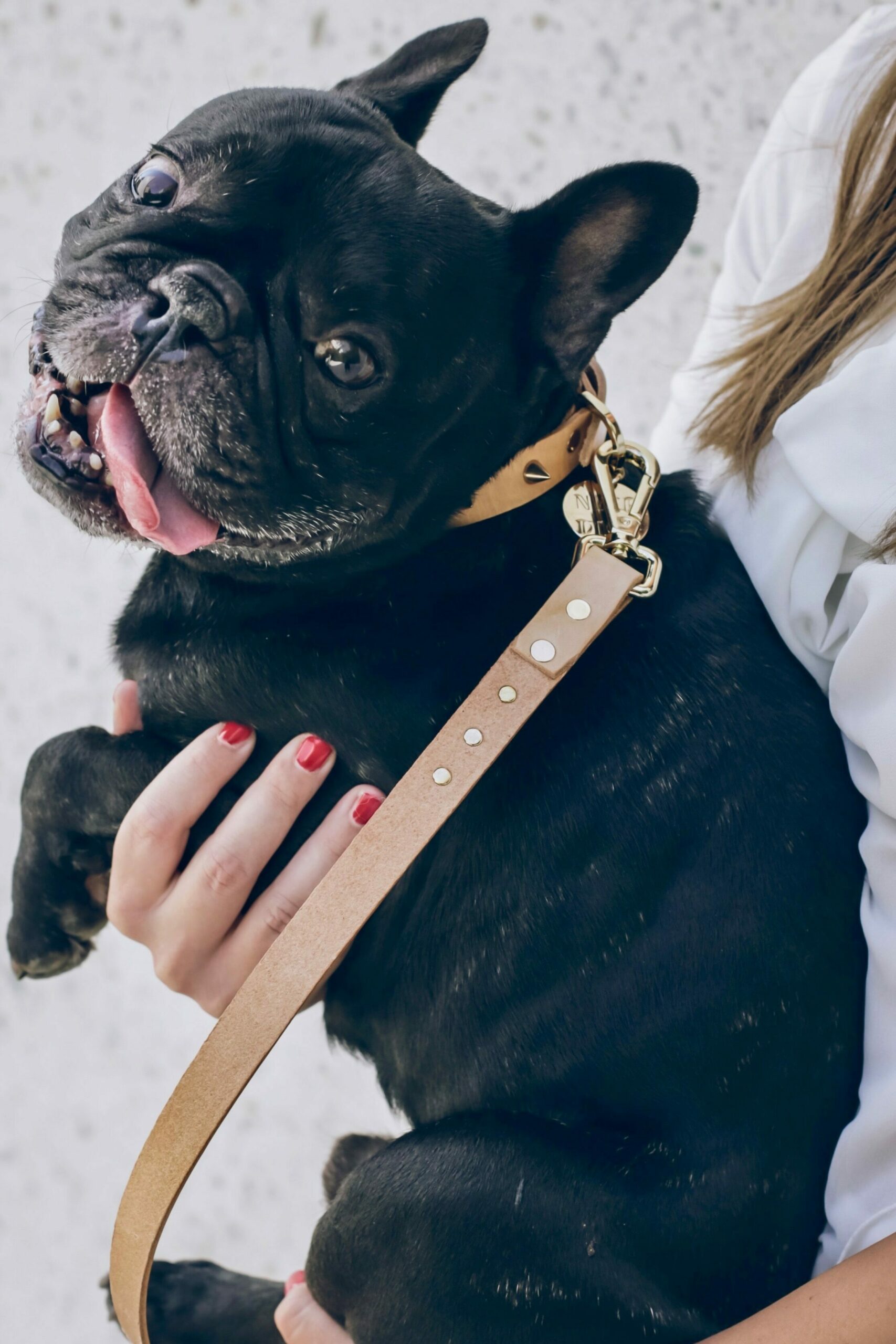
You might not think a whole lot about clip style when considering a leash, but you should. I’m talking about the piece at the end of the leash that attaches to your dog’s collar or harness. This hardware should be made from high-quality, durable, rust-resistant material such as steel or aluminum, and securely fasten leash to collar/harness. I personally like a little bigger clip because it’s easier for me to get on and off my Toy. The clip also needs to fit the D-ring on your dog’s collar or harness. Most do, but there are clips that are too bulky, so keep this in mind when choosing a leash. The most common clip styles are: carabiner, trigger snap, and snap clip or snap bolt clip.
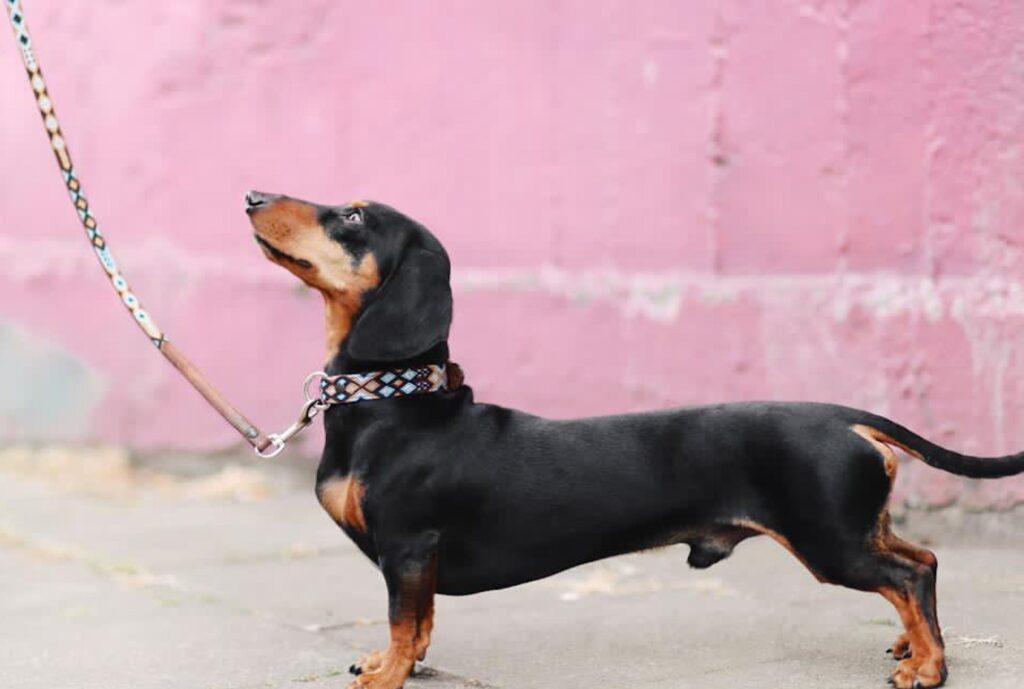
What to Look for in a Leash
Dog leashes for small dogs should be made from durable, water-resistant, high-quality materials that can withstand the outdoor elements. Hardware should be strong, rust-resistant, and securely fasten to D-rings. Leashes should be rated for your pet’s weight, leashes made for larger dogs may be too heavy for your small pooch. Standard length of a leash is 6′, but small dog owners could get away with shorter, like 4′. The shorter the leash, the more control you have over your pet and their safety. Don’t worry so much about the width of your leash, you can use a narrower leash with smaller dogs. The slender design typically weighs less, decreasing the heavy pull on your tiny pet. Other added features to look for are:
Traffic handles for taking quick control of your dog when needed.
Reflective material to increase your visibility factor for those early morning or late-night walks.
Extra clips for toting poop bags or treats.
Convertible or multi connection points for converting your leash into several different styles depending on the activity.
Easy to clean because leashes get dirty too. Some are even machine washable.
Padded or reinforced handle for your comfort and to protect your hands from injury.
Conclusion
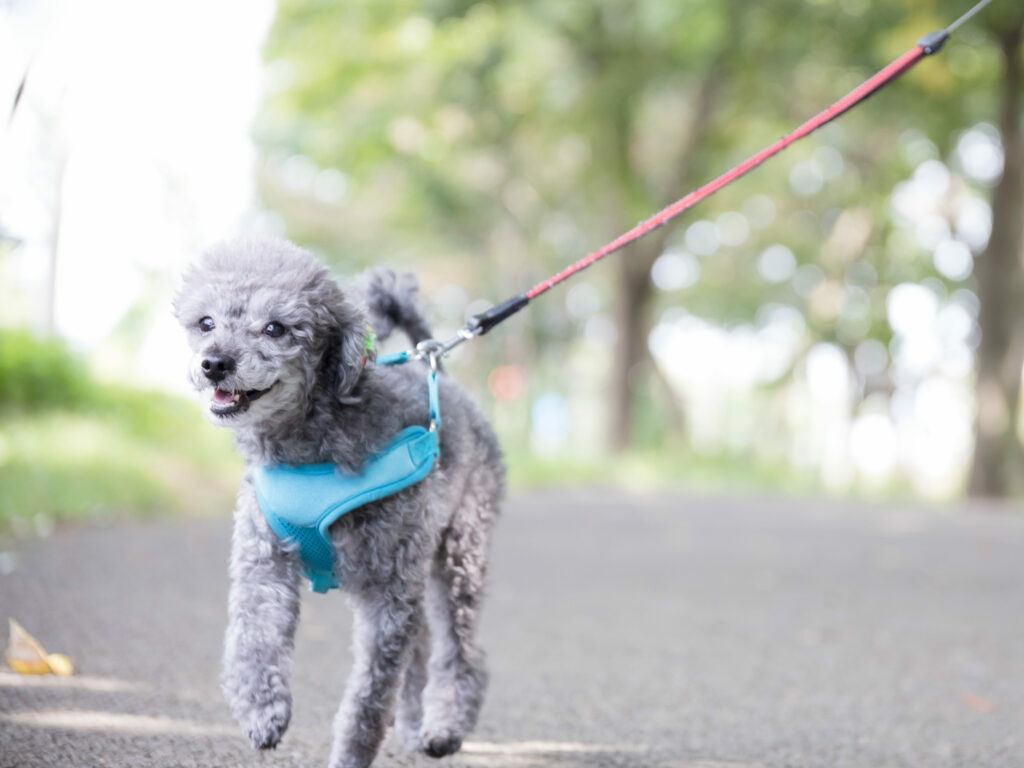
Taking your dog on walks is a great way to bond. It’s both mentally and physically beneficial for you and your pet. The last thing you want to stress about is if your furry friend is comfortable, safe, and secure. The right walking equipment, especially a leash, alleviates this stress because you know you’ve chosen wisely. There are so many choices of dog leashes for small dogs that you’re bound to find one that fits your lifestyle, keeps your pup safe, secure, and comfortable, all while showing off your dog’s unique personality.
